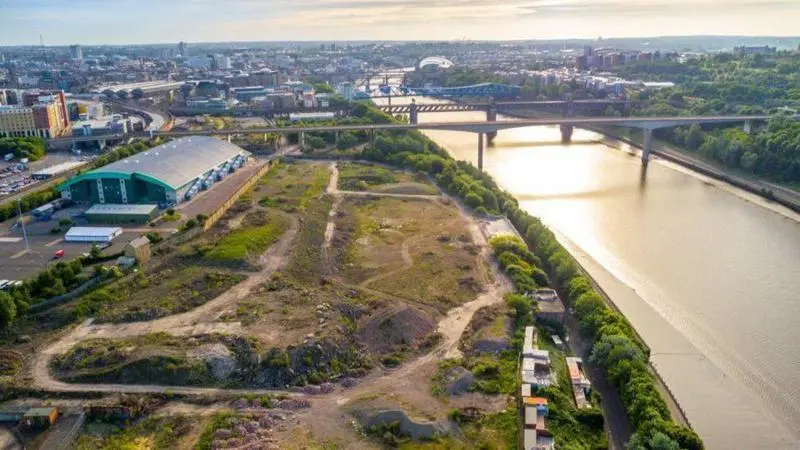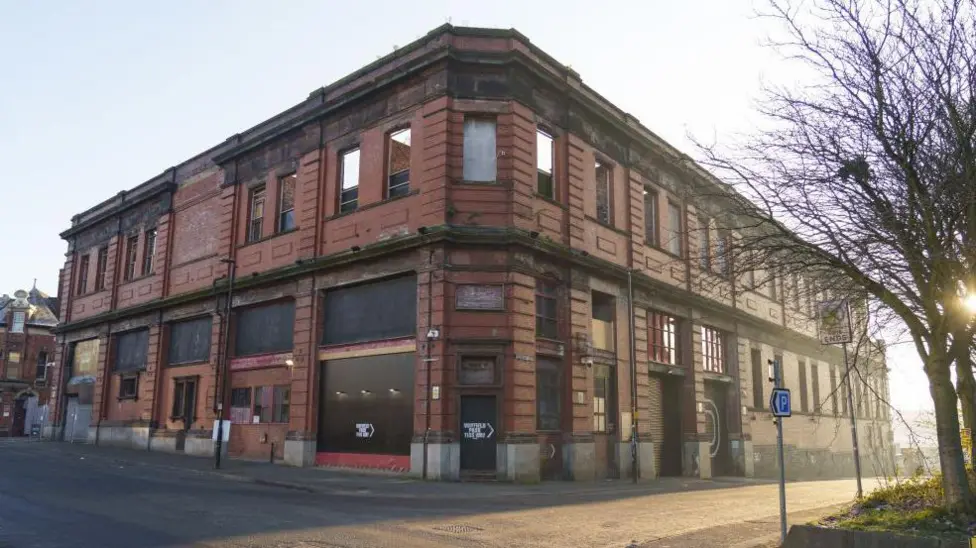| Re: Up to 40,000 homes to be built on disused railway land Posted by Marlburian at 11:25, 2nd August 2025 |     |
Talking of Tilehurst, was it 30 years ago that the station-master's house at the station was demolished and flats built on the site and adjoining land? The goods sidings became the car-park.
(The garage site just up Oxford Road is for sale, and housing there would be preferable to continuing industrial use.)
| Re: Up to 40,000 homes to be built on disused railway land Posted by PrestburyRoad at 08:30, 2nd August 2025 |     |
Some years ago I enjoyed a holiday on the Thames cruising between Lechlade and Runnymede. It felt very rural - there were so few buildings near the river. I compared that with previous holidays on canals, where there are many buildings next to the canals. Thinking about it, I realised there is a simple reason for the difference: the Thames has a wide floodplain, so people had learnt from experience not to build there.
"Those who cannot learn from history are doomed to repeat it" - planners and politicians beware - be careful where you build.
| Re: Up to 40,000 homes to be built on disused railway land Posted by Marlburian at 17:01, 1st August 2025 |     |
A few years ago, there was a proposal for floating-homes not far from Theale Station. It was rejected.
And at Purley between Tilehurst and Pangbourne houses between the Thames and the railway were built with garages forming the ground floor or basement, with stairs leading up to living accommodation above. Not so long ago, a bund was built to inhibit water from the Thames spreading too far. Two or three years ago the water still crept several hundreds of yards inland and there were a lot of cars temporarily parked on rising land, on the same level as the original village.
| Re: Up to 40,000 homes to be built on disused railway land Posted by 1st fan at 13:57, 1st August 2025 |     |
From the BBC:

Up to 5,000 homes are planned on disused land by the River Tyne
The UK government has pledged to build up to 40,000 new homes on disused railway land, including former goods yards, industrial sites and station buildings, over the next ten years.

Up to 5,000 homes are planned on disused land by the River Tyne
The UK government has pledged to build up to 40,000 new homes on disused railway land, including former goods yards, industrial sites and station buildings, over the next ten years.
What a nice looking floodplain there is in that image, will these houses be built on stilts?
| Re: Up to 40,000 homes to be built on disused railway land Posted by Chris from Nailsea at 15:29, 30th July 2025 |     |
From the BBC:

Up to 5,000 homes are planned on disused land by the River Tyne
The UK government has pledged to build up to 40,000 new homes on disused railway land, including former goods yards, industrial sites and station buildings, over the next ten years.
The £1bn development plans will start with previously identified projects in Manchester, Newcastle, Nottingham and Cambridge.
The government said it was part of its "brownfield first" approach and would create "vibrant" new communities.
However, an interim target of 15,000 in the first five years, is a small fraction of the total 1.5 million new homes the government has promised by the end of this parliament, plans that are already facing big hurdles.
The government aims to attract £350m in private sector investment to help develop vacant industrial sites across the country, to create shops, green spaces and hotels as well as flats and houses.
It is part of its bigger promise to tackle housing shortages across the country. However, those plans face a huge range of obstacles, including strains on local infrastructure such as water, sewage, schools and healthcare, and a lack of capacity in the construction industry to build the new homes
Industry groups say there are already backlogs, with hundreds of homebuilding projects held up by regulatory obstacles.

Plans include building 1,500 new homes at Manchester's derelict Mayfield railway station
A new development company, called Platform4, is being created, by rolling together two existing bodies: London and Continental Railways and Network Rail's Property Development Team. Both currently have responsibility for managing disused railway land, but the Department for Transport said that this "fragmented approach" had led to "inefficiencies, duplicated efforts and missed opportunities".
Transport Secretary Heidi Alexander said the new developments would support jobs and drive growth as well as providing much needed homes. "It's exciting to picture the thousands of families who will live in these future homes, the vibrant neighbourhoods springing up, and the new businesses that will launch thanks to these developments," she said.
Bek Seeley, the chair of London and Continental Railways, has been appointed as chair of Platform4.
However, the industry group the National Federation of Builders (NFB) said planning delays were blocking progress on existing building projects on a scale equal to the government's new plans. According to the NFB at least 40,000 new homes are being held up by regulators, including 700 projects waiting for the go-ahead from the Building Safety Regulator, which was set up in the aftermath of the Grenfell Tower fire to oversee higher-risk buildings.
The NFB also said planning delays were also causing small businesses to leave the construction industry, with a knock-on effect on training and apprenticeships.
Rico Wojtulewicz, the NFB's head of policy and market insight said building houses near to railway lines was a "winning blueprint" because stations "already connect up local and regional communities". But he said elsewhere government policy was adding to building costs "on at least ten fronts".
The Building Safety Regulator said many applications had "taken longer than anticipated to process" and that said it was rejecting around 70% of applications because they did not meet legal requirements.
| Re: Up to 40,000 homes to be built on disused railway land Posted by Richard Fairhurst at 12:44, 30th July 2025 |     |
Last suggested by the (then) Government in 2016: https://www.gov.uk/government/news/regeneration-of-stations-set-to-deliver-thousands-of-new-properties-and-jobs
| Re: Up to 40,000 homes to be built on disused railway land Posted by johnneyw at 12:41, 30th July 2025 |     |
It had previously occurred to me that selling off/building on currently disused railway land needs to be considered very carefully. With the renewed emphasis on transporting goods by rail rather than road we need to ensure that in future there's enough space to provide for interchanges between rail and road where it's needed.
With modern systems it may be likely now that less space would be required than that provided for former goods yards but I hope that the thinking is going to be "joined up" enough to ensure that the baby isn't thrown out with the bathwater.
| Re: Up to 40,000 homes to be built on disused railway land Posted by Mark A at 11:48, 30th July 2025 |     |
One of the sites in question being Manchester Mayfield, perhaps the remains of the former terminus station used by the Pines Express will finally see demolition... is it 65 years after those platforms ceased to be used for passenger services?
Mark
| Re: Up to 40,000 homes to be built on disused railway land Posted by grahame at 09:43, 30th July 2025 |     |
I would give this a qualified welcome provided that we are 200% sure that the land will never be needed for railway or linked public transport purposes. Houses can be built other sites a few hundred yards away, but new / re-used / public transport facilities need to be close and linked the current public transport.
Someone muttered "Council Offices" and "Tavistock" so loudly that I heard it here in Norway ;-) as an "oops", and there is another oops where Melksham Tyres (an excellent company and no fault of their own) have been a challenge to station improvements, but the upside yard is in planning for (I think) 112 dwellings and it would make sense - safeguarding access to the railway, and space for a second track, and if need be platform and/or bridge.
| Up to 40,000 homes to be built on disused railway land Posted by Marlburian at 09:22, 30th July 2025 |     |
Radio Four news this morning was proclaiming that thousands of new houses would be built on railway lines, which conjured up first., an impression of moveable homes on wheels, and secondly extended linear developments along disused track beds, which made me wonder whether these should be preserved lest they be needed for re-opening. Turns out that the building will be on disused railway land, including former goods yards, industrial sites and station buildings.
A couple of months ago, I was at the site of Chiseldon Station, south of Swindon, puzzling where exactly it had stood (with the help of a couple of information boards) as the gradients on all sides looked very challenging for steam trains. A resident said that the cutting down to the station (from Chiseldon Camp) had been been back-fillled and houses built on it, leading to speculation about subsidence.
The Government announcement.










